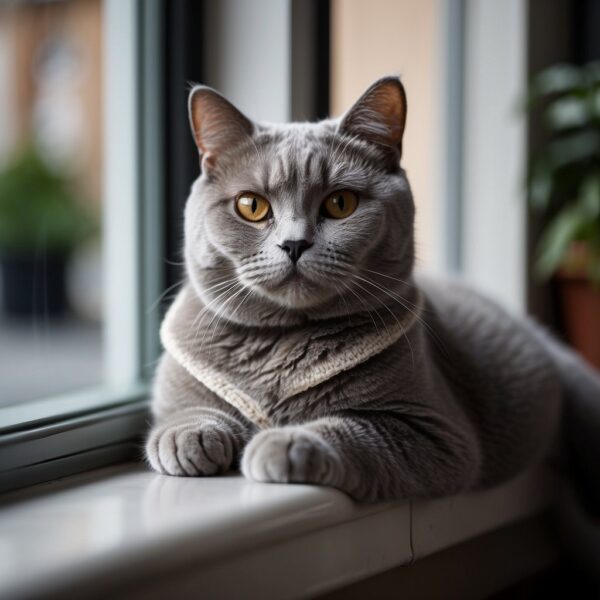
British Shorthair Cats: Ancient Breed in England
The British Shorthair cat, with its distinct round face and dense coat, epitomizes a blend of robustness and refinement. As one of the most ancient breeds in England, it has contributed extensively to the cultural fabric, not least through its likeness to the iconic Cheshire Cat from Lewis Carroll’s “Alice in Wonderland.” This breed’s plush coat, which is most recognized in the “British Blue” variant, presents a captivating grey-blue hue that has endeared these cats to enthusiasts around the world.
These felines are appreciated for their calm demeanor and are known to be excellent companions. Despite their compact and powerful build, British Shorthairs are typically non-aggressive, affectionate, and deeply loyal to their human families, making them superb pets. Their history, stretching back to the first century A.D., reveals a storied evolution from barn cats to high-status pedigree animals. With proper care that includes grooming, appropriate feeding, and attention to health, they can be a cherished part of any household.
Key Takeaways
- The British Shorthair is an ancient and revered breed known for its characteristic appearance.
- They have a calm temperament, making them suitable pets for various households.
- Proper care and maintenance are crucial for their well-being and longevity.
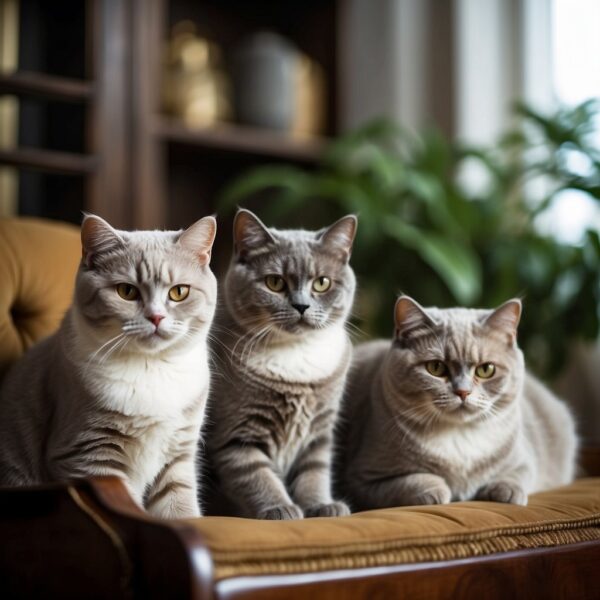
History
The British Shorthair, known for its robust build and dense coat, has origins steeped in antiquity. Its lineage is often associated with the Roman Empire. As the Romans conquered and settled in Britain, they brought with them domesticated cats to control vermin populations. These cats, through interbreeding with local European wildcats, contributed to the genetic pool of what would become the British Shorthair.
The breed’s presence in Britain predates the Roman invasion, suggesting a complex history. Domestic cats in various European regions spread along with the growth of Roman influence; however, evidence indicates that domesticated cats may have reached the British Isles earlier.
The breed faced a critical period during World War I. The breeding programs that sustained the British Shorthair were halted, leading to a near extinction of the breed. Post-war, renewal efforts by breeders, including selecting domestic cats with similar traits, helped in its revival.
Harrison Weir, a pivotal figure in cat fancy, also played a significant role in standardizing the breed. In 1871, he organized the first cat show at the Crystal Palace, London, where the British Shorthair was featured, marking a monumental moment in the history of cat exhibitions and cementing the breed’s status in feline history.
| Milestone | Event |
|---|---|
| Roman Invasion | Introduction of domesticated cats to Britain |
| 1871 | First cat show organized by Harrison Weir featuring British Shorthairs |
| World War I | The breed nearly disappeared |
| Post World War I | Breeding programs resumed to save the breed |
The British Shorthair has since evolved to display a wide variety of colors and patterns, but it is historically noted for its classic blue-gray hue. This breed continues to be cherished for its calm demeanor and sturdy composition, upholding its legacy in cat fancier communities.
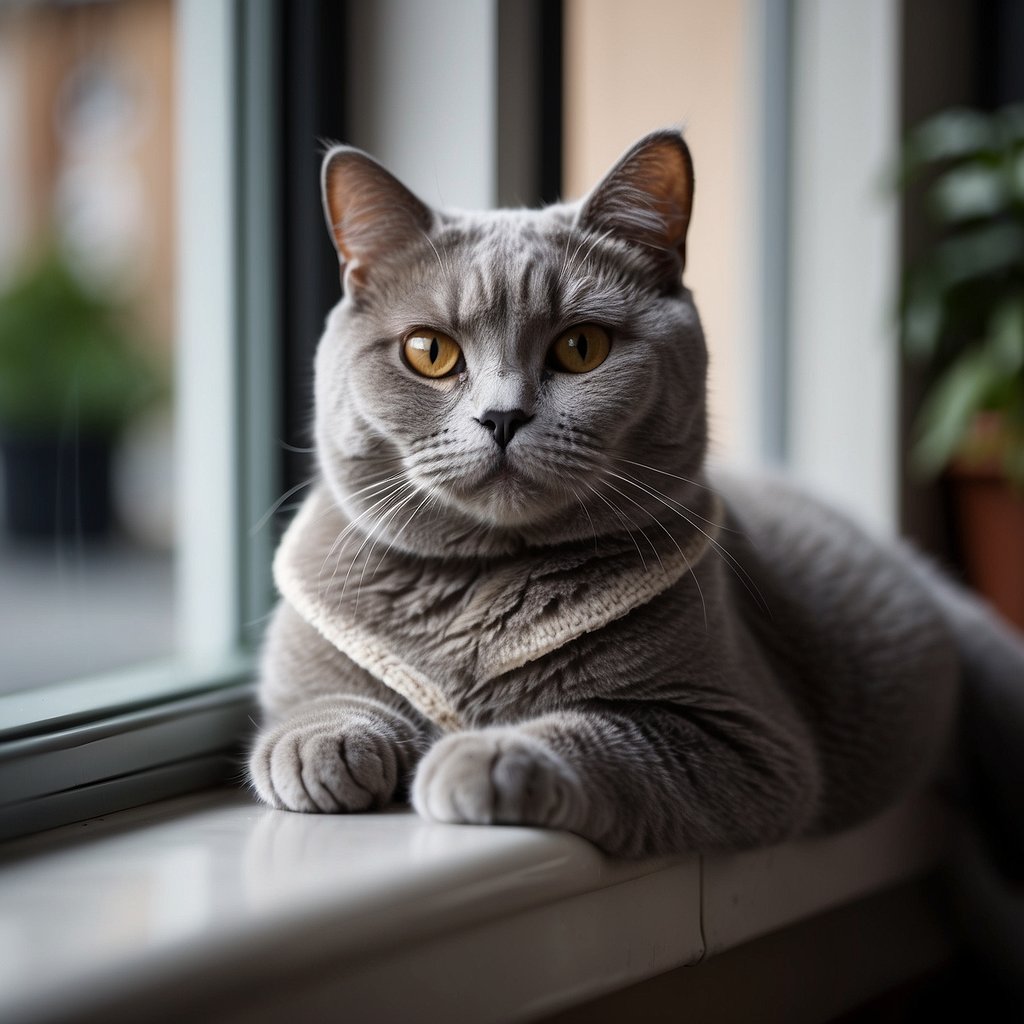
Breed Overview
The British Shorthair, with its plush coat and sturdy build, is an iconic pedigreed feline. Renowned for a calm demeanor and round facial features, this breed combines a muscular physique with a distinctive, cozy appearance.
Physical Traits
- Body: Large and muscular with a broad chest
- Head: Rounded with full cheeks
- Ears: Small to medium-sized, set wide apart
- Eyes: Large, round, and wide-set—often a deep copper or gold hue
- Coat: Dense, short, and plush; designed for insulation
- Tail: Thick at the base, tapering to a rounded tip
- Colors and Patterns: Solid blue is classic, but comes in cream, silver, smoke, calico, and tabby patterns
Personality and Temperament
- Affectionate: Known for a loving nature, without being overly demanding
- Calm and Easygoing: Exhibits a serene presence, suitable as a companion
- Independent, yet Loyal: Balances self-reliance with a deep loyalty to their owners
- Intelligence: Shows smart and thoughtful engagement with their environment
- Playfulness: Retains a moderate play instinct
Health and Lifespan
- Robust Constitution: Generally a healthy breed
- Health Concerns: Can be prone to Hypertrophic Cardiomyopathy
- Lifespan: Typically ranges between 12-16 years
- Preventative Care: Important to monitor diet to prevent obesity

Breeding and Genetics
Breeding British Shorthair cats requires careful consideration of breed standards, color variations, and genetic health. Breeders aim to produce cats that are healthy, conform to recognized standards, and display a wide array of beautiful colors.
Breed Standards
The British Shorthair cat is known for its distinctive physical traits. According to The International Cat Association (TICA) and Cat Fanciers’ Association (CFA), the breed exhibits a broad face, dense coat, and a sturdy body. Reputable breeders aim to match these breed standards, which ensures that their cats are eligible for Cat Shows and maintain the pedigree’s integrity.
- Body: Cobby, muscular with a broad chest
- Head: Round with full cheeks
- Eyes: Large, round, and wide-set
- Ears: Small, rounded at the tip, set far apart
- Coat: Short, dense, and plush
Color Variations
British Shorthairs come in a variety of colors and patterns. The classic British Blue, a solid grey-blue coat, is one of the most recognized. However, breeders have developed silvers, goldens, and colorpoint variations. Wide Band genes contribute to the silver-shaded and golden-shaded varieties, while other genes influence characteristics like colors and patterns.
- Solid: Cream, black, white, blue, and more
- Shaded: Silver, golden
- Patterned: Tabby, bicolor, tortoiseshell, and colorpoint
Genetic Health Considerations
Breeding policies are crucial for maintaining the health of British Shorthair cats. One significant health concern is Hypertrophic Cardiomyopathy (HCM), a heart condition that reputable breeders screen for. Genetic diversity is encouraged to reduce heritable diseases. Pedigree records and health screenings help breeders make informed decisions to protect the genetic health of the British Shorthair.
- Health screening: Includes tests for HCM and other genetic conditions
- Pedigree tracking: Ensures genetic diversity and purebred lineage
- Breeding programs: Designed to maintain breed standards while preventing inbreeding
Breeders also consider the historical lineage of the British Shorthair, including its relation to the French Chartreux and connections with other breeds like the Persian for longhairs or Russian Blue for specific coat colors. These considerations are all part of a comprehensive approach to breeding and genetics in British Shorthair cats.
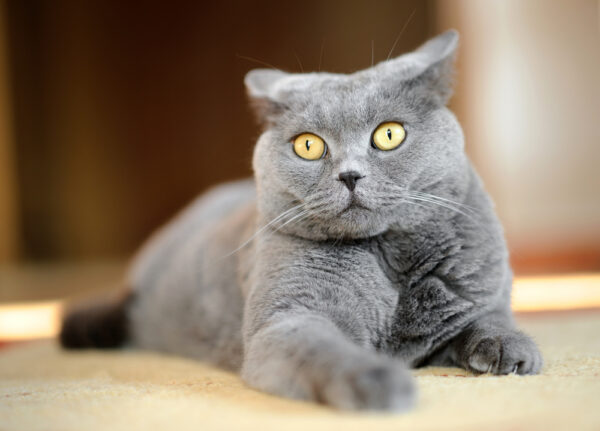
Care and Maintenance
Proper care and maintenance of a British Shorthair cat involve regular grooming to manage their dense coat and creating an enriching environment that stimulates their physical activity.
Grooming
The British Shorthair sports a plush, dense coat that requires consistent grooming. Brushing should be performed several times a week to remove loose hair, decrease the likelihood of hairballs, and maintain skin health. Weekly brushing sessions also serve as an opportunity to check for skin issues or parasites.
- Brushing Frequency: 2-3 times per week
- Tools Recommended: Medium-bristle brush, de-shedding tool, or a stainless steel comb
Environmental Enrichment
Despite their calm nature, British Shorthairs have an underlying playful instinct that necessitates both physical exercise and mental stimulation. Environmental enrichment is crucial to keep them engaged and to prevent obesity, which is especially important as this breed can be prone to weight gain.
- Toys: Interactive toys such as teaser toys and laser pointers can evoke their prey response and are excellent for engaging play.
- Playtime: Minimum of 15 minutes, twice daily
- Activity Level: Moderate; involves interactive games and activities to keep their attention and provide sufficient exercise
To summarize, grooming and environmental enrichment are key to maintaining the British Shorthair’s health and well-being, involving regular brushing and dedicated playtime to address their grooming needs and activity levels, respectively.
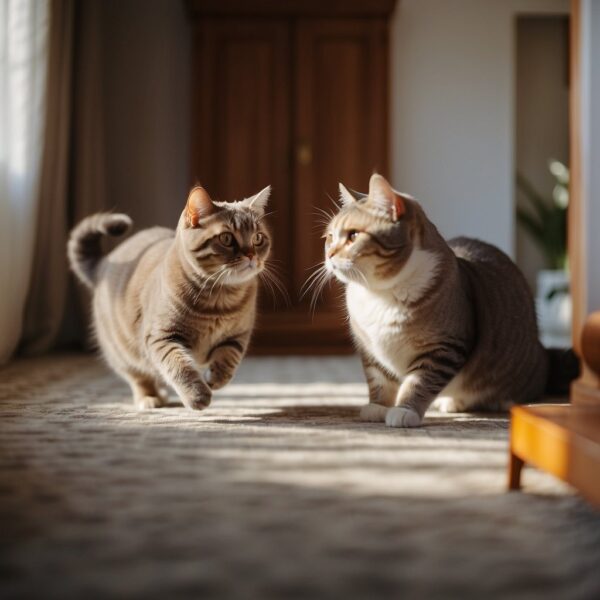
Frequently Asked Questions
In this section, you’ll find concise answers to common inquiries potential and current owners have about British Shorthair cats.
What should be considered before adopting a British Shorthair cat?
One should assess their lifestyle and environment as British Shorthairs are calm and adaptable but do require space to move and play. Prospective owners should also consider the time and resources needed for the cat’s health, grooming, and companionship.
What is the typical personality profile of a British Shorthair cat?
British Shorthair cats are known for being loyal and loving, with a calm demeanor. They tend to be affectionate with their families and may be reserved, yet they are not aggressive, making them good companions.
How can I find a reputable British Shorthair breeder?
To find a reputable breeder, one can visit cat shows, seek recommendations from feline associations, or look for breeders who adhere to ethical standards, such as health testing their breeding cats and providing proper care for kittens.
What is the average cost of owning a British Shorthair cat?
The cost of owning a British Shorthair cat includes the initial adoption fee, which can vary significantly, and ongoing expenses such as food, litter, veterinary care, and grooming, amounting to a few hundred dollars annually.
What common behavior problems can occur with British Shorthair cats, and how can they be addressed?
Behavior issues like scratching furniture or aloofness can occur but can often be mitigated through environmental enrichment, consistent training, and regular interaction to ensure the cat remains sociable and engaged.
Are British Shorthair cats suitable for households with children or other pets?
British Shorthair cats usually get along well with children and other pets due to their tolerant nature, making them suitable for families, provided they are introduced properly and respectful interactions are encouraged.